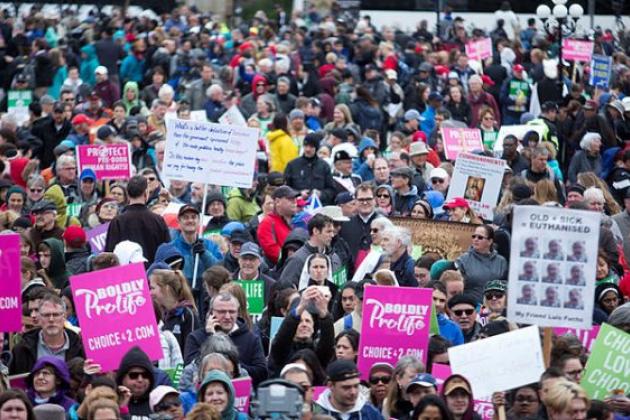
Even in Quebec, where abortion is more readily available, there are still challenges that demand our attention like restrictions on the abortion pill.
By SANDEEP PRASAD
OCT. 2, 2019
Hill Times
Here’s the thing about abortion: it hasn’t been against the law in Canada for over 30 years. But in 2019, it still remains out of reach for hundreds of thousands of people in this country.
Most Canadians—and surveys suggest most are pro choice—believe they can easily access an abortion when they need one. This misconception feeds our sense of complacency around abortion. As the federal election looms, we need to use our votes to correct the record and make sure the message is clear: the status quo hurts us all. We need equal access to abortion now.
It’s not just a question of avoiding “reopening the abortion debate.” We need a government that will do the real work of expanding access to this critical health care service. Our government needs to show that they have a plan to finally dismantle barriers that have long stood in the way of equitable access to reproductive health care.
We can see just how bad the problem is by looking across provinces, territories, regions, and communities. At Action Canada for Sexual Health and Rights, we just re-released Access at a Glance, our resource exposing the discrepancies in access to abortion in each province and territory. And it’s stark: one province has 50 places you can access an abortion, while next door, there are only two or three. That’s a major problem.
This lack of access contravenes one of the pillars of our universal health care system under the Canada Health Act. Health care services must be accessible to all, not just to those lucky enough to live in the right place.
Our research starts to answer a question I often get: where is the worst place in Canada to access an abortion?
Is it Nova Scotia? Last year, Globe and Mail Atlantic bureau chief Jessica Leeder published her own experience seeking an abortion there. Her front-page article featured vivid descriptions of the non-stop problems she faced and what barriers to care in the province are like. While she showcased the bad, on the other side of the coin, a network of Nova Scotia health care providers and activists have worked to create a self-referral line to expand access and help people find the closest abortion care provider.
So, is it Prince Edward Island, where it took the threat of a lawsuit for services to be made available as late as 2017? Or in New Brunswick, where the government is violating the Canada Health Act by refusing to fund abortions in clinics?
The truth is, the best and the worst places can be found in every province, even in places like Ontario with its high number of points of service and Quebec, where abortion care is integrated into the primary health care network. There are barriers in every province and territory. This is an issue we must tackle as a country.
A Torontonian can access abortion care in their community—though they might face unaffordable administrative fees at many clinics and none of the local hospitals offer it—but someone in rural Northern Ontario would have to travel up to thousands of kilometres. We can’t accept this as fair.
In the summer of 2019, Saskatchewan became the last province to provide its residents with universal cost coverage for the abortion pill. The abortion pill offers the potential to finally address gaps in access to abortion care because it can be prescribed by frontline health care providers in every community, including family doctors, nurse practitioners, and midwives. That said, as the roll-out of the abortion pill shows, political will and the government’s support in getting health care providers engaged is key. Once more, governments must do more than the bare minimum—instead sharing with us their plans to ensure that gaps in access to health care will not go unaddressed.
In the province, Saskatoon is the farthest north you can access a surgical abortion, but only up to 12 weeks. Many Saskatchewanians live in the only two cities where surgical abortion is offered and for many people in the province’s north, cuts to the Saskatchewan Transportation Company have made travel virtually impossible.
The challenge is the same in Alberta and Manitoba. Many live in rural and remote communities, while abortion care remains available only in urban centres. Even in Quebec, where abortion is more readily available, there are still challenges that demand our attention like restrictions on the abortion pill.
Abortion remains one of, if not the most stigmatized essential health service in Canada. While the 1988 Supreme Court ruling should have settled that abortion be treated like any other medical procedure, our lack of progress shows how thorny of an issue it still is. Instead of simply asking politicians if they will or will not debate people’s right to choose, we need to move forward by asking our governments to commit to ensuring everyone can truly access the care they need.
As we head to the polls, let’s take the cap off of our imagination to achieve greater reproductive and sexual justice for all. Anyone who needs an abortion deserves to live in the best place to get one.
Sandeep Prasad is the executive director of Action Canada.